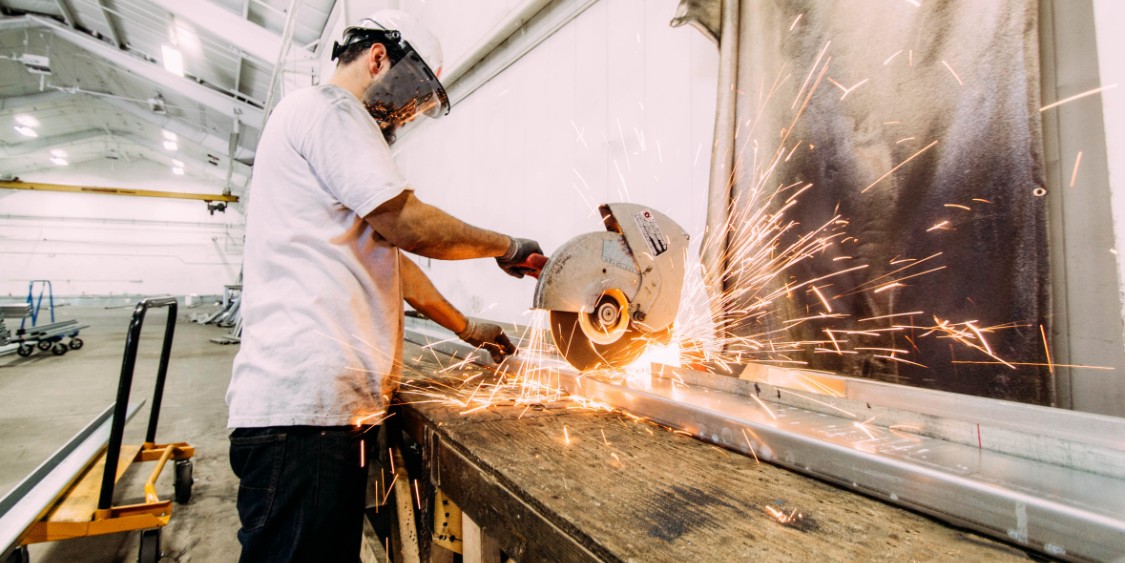
Among the hazards you face as a manufacturer, combustible dust is one of the most damaging. Dust fire and explosions in industrial facilities result in hundreds of fatalities and injuries. These explosions can also cause other significant losses, including untold amounts of property damage, remediation costs and lost revenue.
Secondary Explosions
The severity of these incidents stems from the fact that an initial, minor explosion can shake loose hidden, accumulated dust or damage a containment system. This in turn triggers secondary explosions, which can be far more destructive than the primary explosion due to the increased quantity and concentration of dispersed combustible dust. Extensive damage and injury can subsequently result from collapsing building components, flying debris and fire.
In many combustible dust incidents, workers and managers were either unaware of the hazard or failed to recognize the deadly potential of dust explosions. Understanding the triggers of combustible dust explosions is essential to protecting your company from loss. By understanding the triggers, you can effectively evaluate the potential hazards related to dust accumulation in your organization and communicate these hazards to your workforce to prevent loss and ensure your employees’ safety.
Hidden Danger
Combustible dust is a solid material that presents a fire or deflagration hazard when suspended in the air in a certain concentration. It can be either organic or metallic dust that is ground into very small particles, fibres, chips, chunks, flakes or a mixture of these.
Combustible materials—and many materials normally considered noncombustible, including metals, wood, plastic, rubber, biosolids, coal, flour, sugar, paper, soap and dried blood—become one component of a fire and explosion hazard when ground into dust during operations or processes such as:
- Abrasive blasting
- Cutting
- Grinding
- Polishing or crushing materials
- Conveying
- Mixing, sifting or screening dry materials
- Buildup of dry residue in wet processes
Dangerous Conditions
Settled dust on any surface—be it visible or hidden—can become airborne, presenting the risk of explosion when exposed to any ignition source. When combustible dust accumulates, under certain common conditions, there is an elevated risk of explosion. These include:
- A specific concentration of dust in the air
- The presence of oxygen
- A confined space
- An ignition source, which could range from open flames and electrical discharges to warm machinery
Conduct a Facility Dust Hazard Assessment
In order to fully understand the risks at your facility and to assess the potential for dust explosions, conduct a facility analysis and identify the following:
- Materials that can be combustible when finely divided
- Processes which use, consume or produce combustible dusts
- Open areas where combustible dusts may build up
- Hidden areas where combustible dusts may accumulate
- Means by which dust may become dispersed in the air
- Potential ignition sources
What Can I do to Mitigate Risk?
An explosion could cause severe damage to your facility and put the lives of your employees in jeopardy. Take the following actions to reduce the risk.
- .Educate your employees
- Train employees to recognize and prevent dust hazards when they begin work. Train them periodically to refresh their knowledge, when reassigned and when hazards or processes change.
- Train supervisors to encourage the reporting of unsafe practices and to facilitate abatement actions. With effective reporting, employees can be instrumental in recognizing hazards.
- Emphasize housekeeping.
- Communicate the importance of housekeeping to your employees, and conduct regular inspections to ensure the cleaning and maintenance of all surfaces and equipment is thorough.
- Inform employees that simple rules for identifying dangerous dust accumulation (e.g. writing in the dust, visibility of a dust cloud) are unreliable because of conditions needed for an explosion are variable.
- Establish a regular schedule for cleaning to ensure the facility’s constant cleanliness.
- Control dust.
- Install functional dust-containing systems free of leaks to reduce the amount of dust that can accumulate.
- Be sure there is access to all hidden areas to permit employee inspection for dust during routine houskeeping.
- Control ignition sources.
- Institute a hot work permit system for how welding, cutting and grinding is to be performed around areas where combustible dust can accumulate.
- Allow only electric-powered cleaning devices (vacuum cleaners) and electrical equipment that is approved for the location.
- Control static electricity and bond equipment to ground.
- Prohibit smoking, open flames and sparks.
- Control mechanical sparks and friction.
- Ensure that separator devices effectively remove foreign materials capable of igniting dust from processes.
- Separate heated surfaces and heating systems.
- Regulate the use and type of industrial trucks.
Damage Control
Equip your facility with suppression systems that will contain explosions and minimize their danger and damage. A comprehensive system might include pressure-relief venting for equipment, spark and ember detection and extinguishing systems, explosion protection systems and sprinkler systems. Formulate emergency procedures and train employees to follow them in the event of a combustible dust explosion. Procedures should emphasize the two basic ways employees can protect themselves from injury:
- Separation from the hazard (isolation with distance)
- Segregation of the hazard (isolation with a barrier)
- Shutdown of any equipment
- Avoidance of extinguishing methods that create dust clouds
- Adherence to your emergency action plan
Be Prepared
While taking all the steps necessary to be prepared for a combustible dust explosion, you must also ensure your business’s protection through proper risk transfer. The Axis Insurance Group can assist you in securing the protection necessary in the event of any disaster. Contact us to discuss your coverage options.
Looking for manufacturing safety policies and procedures that support a safety-conscious work environment? Download our free Manufacturing Employee Safety Manual!


